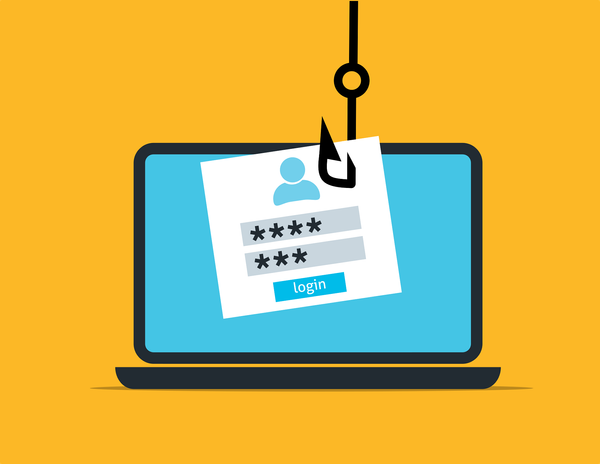Imposter Scams On The Rise: How to Protect Yourself

Imposter scams occur when someone pretends to be a trustworthy individual or institution to deceive and steal from unsuspecting victims.
Scammers may pose as government officials, tech support representatives, family members, or even romantic interests. Their ultimate goal is to trick you into giving them money or personal information.
Did you know?
- Impersonation scams defraud thousands of individuals every year. According to the IC3, two categories of fraud, Tech/Customer Support, and Government Impersonation, have resulted in over $1.3 billion in losses:
- Government Impersonation has led to 14,190 complaints and $394,050,518 in losses, with a 63% increase in trend.
- Tech and Customer Support have resulted in 37,560 complaints and $924,512,658 in losses, with a 15% increase in trend.
(Source: ic3.gov)
How Do Imposter Scams Work?
Imposter scams typically follow a similar pattern, relying on psychological manipulation to succeed. Here's how these scams generally unfold:
- Initial Contact: Scammers often initiate contact through phone calls, emails, text messages, or social media. They may use spoofed phone numbers or email addresses to make their communications appear legitimate.
- Establishing Credibility: The scammer poses as someone you trust or an authoritative figure. They might claim to be from the IRS, a tech support team, a grandchild in distress, or even a new romantic interest.
- Creating Urgency: To prevent you from thinking too carefully about the situation, the scammer creates a sense of urgency. They might claim you owe money, there's a problem with your account, or a loved one is in danger.
- Requesting Payment or Information: Finally, the scammer asks for money or personal information. Payment requests are often for untraceable methods like gift cards, wire transfers, or cryptocurrency.
Types of Imposter Scams and the Stories Scammers Tell
An imposter scammer may call, text, or email to convince you they are someone in authority. They may even use caller ID to make it look like they are calling from an official government or business number.
Imposter scams come in many forms, with scammers inventing various stories to deceive their targets. Here are some common types of impostor scams and the narratives they use:
1. Government Imposter Scams: Scammers pose as IRS agents, Social Security officials, or other government representatives. They may contact you claiming that you owe taxes or there's an issue with your benefits. They often use threats of legal action or arrest to create a sense of urgency and pressure you into paying immediately.
Related: How to check if a phone number is a scam
2. Tech Support Scams: Fraudsters pretend to be from reputable tech companies like Microsoft or Apple, claiming that your computer has a virus or other problem. They might contact you through phone calls or pop-up messages on your computer. The scammer then asks for remote access to "fix" the issue but instead installs malware or steals your personal information.
Related: How To Spot and Avoid Tech Support Scams
3. Romance Scams: Scammers use online dating platforms to establish romantic relationships. After gaining your trust, they fabricate stories about needing money for travel expenses, medical emergencies, or other personal crises. Once you send the money, they often disappear.
Related: How to identify military romance scams. Are you a potential target?
4. Family/Friend Imposter Scams: Someone posing as a grandchild or other relative contacts you, claiming to be in trouble, such as being arrested or involved in an accident. They urgently ask for money to resolve the situation.
5. Business Email Compromise (BEC) Scams: These scams target businesses by impersonating executives or vendors. Scammers send emails requesting unauthorized payments or sensitive information, often using fake email addresses that closely resemble legitimate ones.
Related: 'Scam likely' calls. How they work and how you can block them
6. Charity Scams: Fraudsters pose as representatives of legitimate charities, especially after natural disasters or other crises. They solicit donations, but the money goes directly to the scammer instead of the intended cause.
Related: Severe Weather, Severe Scams: Surviving Post-Disaster Fraud
7. Trusted Companies Impersonations: Scammers may impersonate representatives from companies you do business with, such as your financial institution, utility company, or a company that offers technical support. They might contact you, claiming there's a problem with your account, a past-due bill, or an urgent need to fix your computer. They use the trust you have in these companies to steal your personal information or money.
Related: Top 9 Utility Scams: Tips to Recognize and Avoid Them
Real-Life Story: The "Phantom Hacker" Scam
The FBI warned last year about the "Phantom Hacker" scams, heavily impacting senior citizens. This scam evolved from tech support fraud to a complex fraud scheme involving fake financial institutions and government officials to gain victims' trust and target their savings.
Victims of this scam lost their entire banking, savings, retirement, or investment accounts, believing they were protecting their assets. From January to June 2023, the FBI received 19,000 tech support scam complaints, totaling over $542 million in losses. Nearly 50% of victims were over 60, accounting for 66% of the losses. By August 2023, losses had already surpassed those in 2022 by 40%.
The Scam:
Phase 1 - Tech Support Imposter
1. A scammer posing as tech support contacts the victim via phone, text, email, or a pop-up, instructing them to call a number for help.
2. Once the victim calls, the scammer directs them to download software, granting remote access to the victim's computer. The scammer fakes a virus scan and claims the computer is at risk of being hacked.
3. The scammer then asks the victim to open their financial accounts to check for unauthorized charges, identifying the most lucrative account to target. They tell the victim they will receive further instructions from the financial institution's fraud department.
Phase 2 - Financial Institution Imposter
1. A scammer posing as a financial institution representative contacts the victim, claiming their accounts have been accessed by a foreign hacker. They instruct the victim to move their money to a "safe" third-party account, like the Federal Reserve.
2. The victim is directed to transfer money via wire transfer, cash, or cryptocurrency, often to overseas recipients, in multiple transactions over days or months.
3. The scammer advises the victim not to inform anyone about the real reason for moving their money.
Phase 3 - US Government Imposter
1. A scammer posing as a US Government employee contacts the victim. If the victim becomes suspicious, the scammer sends an email or letter on what appears to be official US Government letterhead to legitimize the scam.
2. The scammer continues to stress that the victim's funds are "unsafe" and must be moved to a new "alias" account for protection until the victim complies.
How to Avoid Imposter Scams
Being aware of the tactics scammers use is the first step in protecting yourself. Here are some warning signs and tips to avoid falling victim:
- Unsolicited Contact: Be cautious of unexpected calls, emails, or messages from people claiming to be from government agencies, tech companies, or other organizations.
- Urgency and Threats: Scammers often create a sense of urgency or use threats to pressure you into acting quickly.
- Payment Methods: Be wary of anyone asking for payment via gift cards, wire transfers, or cryptocurrency. Legitimate organizations typically do not request these payment methods.
- Verify Identities: If you're unsure about the legitimacy of a request, verify the person's identity independently. Contact the organization directly using official contact information.
- Personal Information: Never share personal or financial information, such as passwords, card numbers, or your SSN, with unsolicited contacts. Legitimate organizations will not ask for sensitive information over the phone or via email.
How to Protect Yourself Against Imposter Scams
Here are some practical steps to protect yourself from impostor scams:
- Educate Yourself: Stay informed about common scams and the latest tactics used by fraudsters.
- Use Caller ID: Screen calls and let unknown numbers go to voicemail. Scammers often spoof phone numbers to appear legitimate.
- Secure Personal Information: Protect your personal and financial information. Shred documents containing sensitive information and use strong, unique passwords for online accounts. Consider getting Bitdefender Digital Identity Protection for continuous online data monitoring and instant alerts in case of breaches.
- Monitor Accounts: Regularly check your bank and credit card statements for unauthorized transactions. Consider setting up alerts for suspicious activity.
- Use Scamio, our AI-powered scam detection tool, to uncover scams and scammers. Send any texts, messages, links, QR codes, or images to Scamio, which will analyze them to determine if they are part of a scam. Scamio is free and available on Facebook Messenger, WhatsApp, and your web browser. You can also help others stay safe by sharing Scamio with them in France, Germany, Spain, Italy, Romania, Australia, and the UK.
- Report Scams: If you are targeted by a scam, report it to the FTC, your state attorney general, or the BBB.
FAQs
What should I do if I think I've been scammed?
If you believe you've fallen victim to an imposter scam, act quickly. Contact your bank or credit card company to report the fraud and dispute any unauthorized charges. Additionally, report the scam to the FTC at ReportFraud.ftc.gov and your local law enforcement.
How can I verify the legitimacy of a caller or email?
To verify a caller's or email's legitimacy, contact the organization directly using official contact information from their website. Do not use phone numbers or email addresses provided in the suspicious communication. For example, if someone claims to be from the IRS, call the IRS directly using the number on their official website.
What should I do if I've already sent money to someone I don't know?
If you've sent money to someone who contacted you, please report it to the Federal Trade Commission (FTC).
You can contact the FTC at 1-877-382-4357 or file a report online at ftc.gov/complaint.
The FTC relies on these complaints to pursue scammers. Any information you can provide will assist investigators.
tags
Author
Cristina is a freelance writer and a mother of two living in Denmark. Her 15 years experience in communication includes developing content for tv, online, mobile apps, and a chatbot.
View all postsRight now Top posts
How to Protect Your WhatsApp from Hackers and Scammers – 8 Key Settings and Best Practices
April 03, 2025
Outpacing Cyberthreats: Bitdefender Together with Scuderia Ferrari HP in 2025
March 12, 2025
Streamjacking Scams On YouTube Leverage CS2 Pro Player Championships to Defraud Gamers
February 20, 2025
How to Identify and Protect Yourself from Gaming Laptop Scams
February 11, 2025
FOLLOW US ON SOCIAL MEDIA
You might also like
Bookmarks







